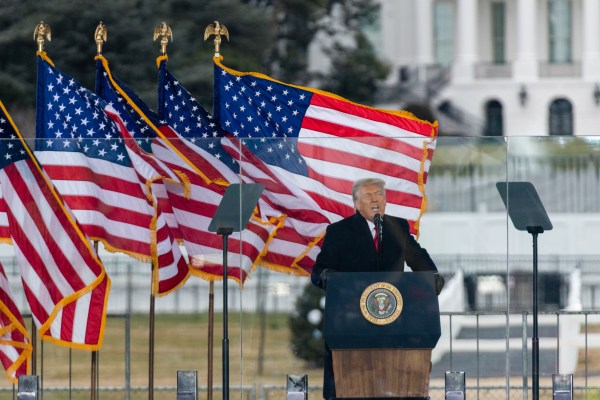Facebook and YouTube have removed a video posted by President Trump telling rioters who stormed Congress “we love you.” The same video was left online but blocked from being shared by Twitter just minutes ago.
A great deal of video and content from the chaotic scene in Washington, D.C. can be found on social media, but Trump’s commentary was spare. His posts suggested the rioters “remain peaceful,” well after they had broken into the Capitol buildings and Congress had been evacuated.
At about 5 PM Eastern time, Trump posted a video in which he reiterated that the election was “stolen” but that “you have to go home now. Go home, we love you. You’re very special.”
On Twitter this was soon restricted, with a large warning that “this Tweet can’t be replied to, Retweeted, or liked due to a risk of violence.”
Guy Rosen, VP of Integrity at Facebook, wrote on Twitter that “this is an emergency situation and we are taking appropriate emergency measures, including removing President Trump’s video. We removed it because on balance we believe it contributes to rather than diminishes the risk of ongoing violence.”
At Facebook there is some precedent for one of Trump’s posts being removed. In August, the company took down a video in which Trump stated that children were “almost immune” to COVID-19, a dangerous and false claim not supported by science.
As Twitter and Facebook crafted bespoke policies to address threats to the election leading into November, YouTube mostly remained quiet. In early December, a month after the election, the company announced that it would begin removing content that made false claims that the U.S. election was affected by “widespread fraud or errors.” YouTube’s decision to remove the president’s video on Wednesday aligned with that policy.
“We removed a video posted this afternoon to Donald Trump’s channel that violated our policies regarding content that alleges widespread fraud or errors changed the outcome of the 2020 U.S. Election,” a YouTube spokesperson told TechCrunch, noting that the video is allowed if accompanied by proper context for “educational” value.
This story is developing.


Recent Comments